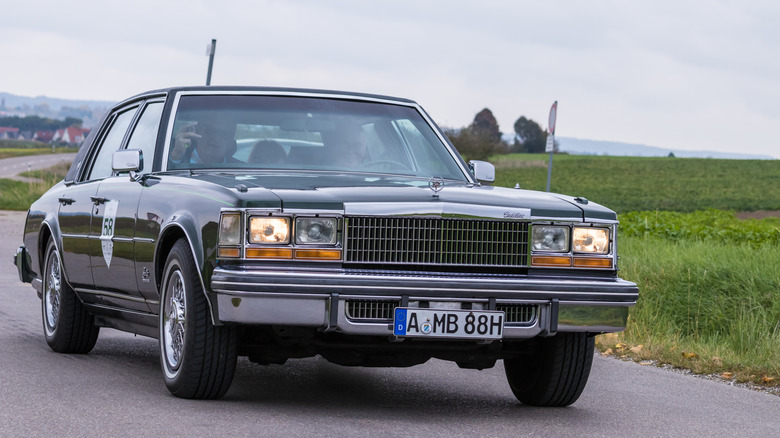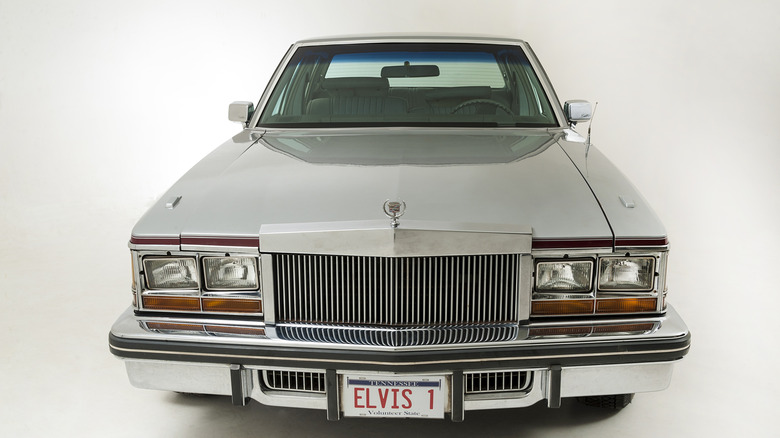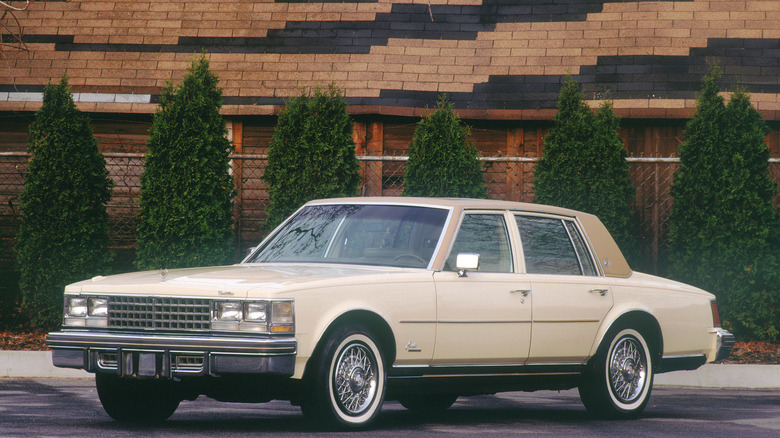How The Oil Crisis Drove Cadillac To Develop The Seville
1973's oil embargo was a tremendous threat to the U.S. auto industry. It occurred when Arabic nations under the Organization of the Petroleum Exporting Countries imposed major cuts to U.S. importation of petroleum in response to its relationship with Israel. Some of the most successful businesses, however, have a way of turning difficult situations into opportunities. This is exactly what Cadillac did with its iconic Seville.
The Seville first arrived in May 1975, and went against the grain of what competitive luxury cars offered at the time. The bigger, the more powerful and gas-hungry, the better, was the way of thinking for many at the time, but excess doesn't always pay. Luxury cars aren't known for their practicality, but the oil embargo would have such a devastating effect that the Seville appeared to be the way forward for Cadillac (though it's a bit of a lesser-known model today).
Here's how the Seville was uniquely adapted for this troubled global situation, as well as how the crisis rendered it necessary in the first place.
The 1973 oil crisis and the rise of the Cadillac Seville
The measures taken by the Organization of the Petroleum Exporting Countries were a response to the US support for Israel during that year's Arab-Israeli war. The embargo was intended as a financial blow, and it was certainly a potent one to the United States, which was highly reliant on supplies of the now-very-expensive overseas oil. The dollar was weakened as inflation worsened, in what the U.S. State Department Office of the Historian deemed "a decision to allow the U.S. dollar to float freely in the international exchange."
As a result, then-President Richard Nixon's administration set about to broker a deal. January 1974's First Egyptian-Israeli Disengagement Agreement resulted, and the crisis ended three months later, but it would have a profound long-term effect. The Strategic Petroleum Reserve, with reported room for some 714 million barrels, was introduced, for one thing.
For Cadillac, the aftermath of the crisis presented a unique opportunity: a chance to develop a luxury car that better suited for this new world of more tenuous petroleum supplies, one that wasn't so monstrously big or ravenous for fuel.
The Cadillac Seville: When luxury meets practicality?
Whether for reasons of fuel conservancy, because they were cheaper to run, or both, consumers were feeling a need for cars that weren't gas-guzzling behemoths in these difficult times. Cadillac, master of all things behemoth as they were (even its 1976 Cadillac Fleetwood Sixty Special Brougham has a curb weight of 5357 lbs or 2430 kg), recognized that. Hence, the Seville was born.
The plan, it seems, was to create a solution without compromising Cadillac's lofty status and still remaining competitive. Approximately 71.8 inches wide and 204 inches in length, the original Seville is far from a slight vehicle, but it boasts a V8 engine and reportedly has a top speed of 116 mph.
Around 45,000 of the original Seville model sold during its debut year on the market, an impressive proof of concept for the company. The Seville family wasn't designed to be flashy looking, but this doesn't mean that it didn't leave an impression. In December 1979, Valerie Garrett told The New York Times, "Everywhere I go — on the freeway, in the neighborhood — people look at the car and say, 'Wow!'" Its premium price tag (the 1980 model cost $20,000) gave it luxury status, while demonstrating that the company could meet the needs of a changing world and consumer needs and attitudes.


